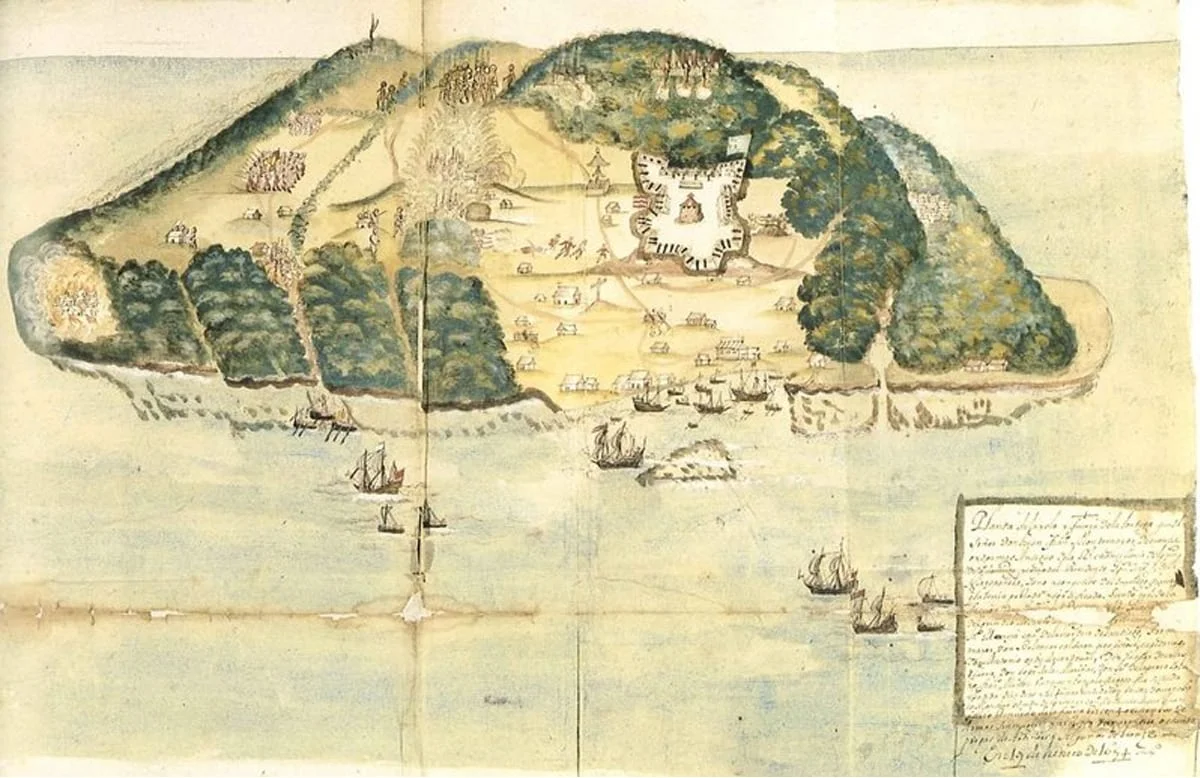Tortuga is an island that forms part of Haiti off the northwest coast of Hispaniola, that during the 17th century was a stronghold for piracy operating throughout the Caribbean.
The earliest mention of Tortuga was in 1492 during the first voyage of Christopher Columbus, who named the island after a resemblance to a turtle’s shell. The Spanish would settle the island a century later in 1598, for the cultivation of sugar and tobacco as their main crops.
In the early 1600’s, French colonists steered westward from the colony on Saint Kitts (also known more formally as Saint Christopher Island), looking to settle on the largely Spanish occupied Hispaniola. The French instead settled on Tortuga, with the island becoming divided between French and English colonists from 1630 onwards.
During this period, buccaneers (from the French word boucanes – to describe huts for making ‘viande boucanée’ – jerked meat or jerky) hunted the wild boars and cattle in the largely uninhabited areas of Tortuga. The name would later be applied to describe the corsairs or privateers, who were authorised to conduct raids on Spanish in the Caribbean.
After a rapid period of succession between the Spanish and several nations over dominion of Tortuga, the French Engineer, Jean La Vasseur raided the island during the early 1640’s, quickly taking control of the islands major ports and establishing himself as the governor. La Vasseur was also credited with the construction of the Fort de Rocher that overlooked the islands main harbour, to prevent further encroachment by the Spanish.
The official lawlessness of Tortuga under La Vasseur’s governorship made the island an appealing base for piracy to operate freely. La Vasseur’s opened the port to privateers of all nations, in exchange for a percentage of the wealth of every vessel anchoring there.
It was around this time that the Brethren of the Coast emerged in the Caribbean, operating from Tortuga, and in the town of Port Royal on the island of Jamaica. The Brethren was a loose coalition of pirates and privateers made up of French and Englishmen, along with a small number of Dutchmen.
Members of the Brethren were supposedly governed by a pirate code or ship’s article, that favoured legislative decision-making, hierarchical command authority, individual rights, and equitable division of revenues. They regulated their privateering enterprises within the community of privateers, and with their outside benefactors, under the protection of a government license called a letter of marque and reprisal.
By 1670 the buccaneer era was in decline, and many of the pirates turned to log cutting and wood trading as a new income source. In 1680, new Acts of Parliament forbade sailing under foreign flags (in opposition to former practice). This was a major legal blow to the Caribbean pirates. Settlements were made in the Treaty of Ratisbon of 1684, signed by the European powers, that put an end to piracy.
Header Image – 17th century map of Tortuga – Public Domain





